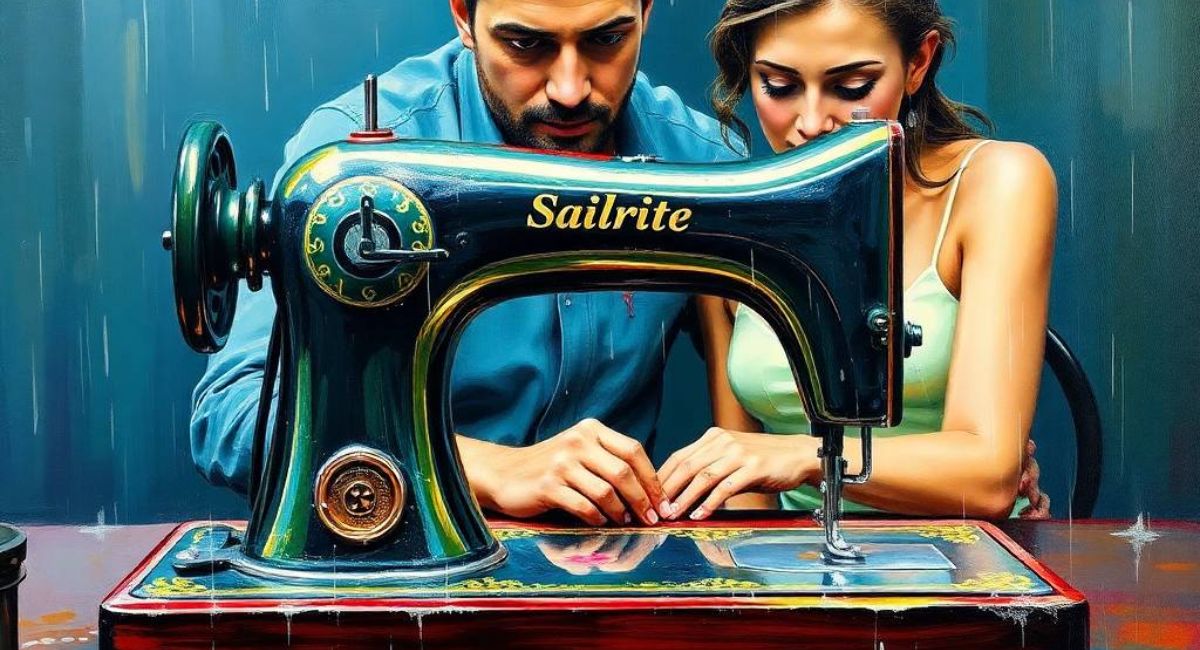
Sailrite sewing machine stands as a trusted name in the world of embroidering since precision, tenacity, and versatility are believed to be its calling cards. Enjoying sailrite sewing machine the solitary hobby of crafting at home? DIY upholstering? A seasoned professional working on heavy fabrics? Then, the name Sailrite will always command respect for its machinery capable of handling the hardest of works.
This guide will cover everything you need to know about the Sailrite sewing machine—from its history and key features to how it compares with other sewing machines, and why it’s considered a top choice for marine, canvas, leather, and upholstery projects. By the end of this article, you’ll have a complete understanding of Sailrite, how to choose the right model, and practical tips to get the best performance out of your machine.
What is a Sailrite Sewing Machine?
The Sailrite sewing machine is a specialized heavy-duty sewing machine designed to stitch through tough materials like canvas, vinyl, upholstery fabric, denim, and even leather. Unlike regular home sewing machines, Sailrite models are built with industrial-grade components, powerful motors, and walking-foot technology that allows for consistent and professional-quality stitches, even on multiple layers of thick fabric.
Sailrite started as a family-owned company focused on sailing and marine supplies, which explains why their sewing machines became especially popular among boat owners who needed reliable equipment for sails, covers, and upholstery. Over time, these machines expanded into other markets such as furniture making, automotive upholstery, and leather crafting.
Why Choose a Sailrite Sewing Machine?
1. Heavy-Duty Capability
The biggest advantage of a Sailrite sewing machine is its ability to sew through multiple layers of thick fabric. For example, projects involving canvas, denim, or marine vinyl often require a machine with high piercing power, something most domestic sewing machines lack. Sailrite fills that gap.
2. Walking-Foot Technology
Sailrite’s patented walking-foot technology ensures that fabric layers feed evenly through the machine. This eliminates issues like uneven stitching, skipped stitches, or fabric shifting—common problems when working with heavy materials.
3. Portability and Compact Size
Unlike some industrial machines that are large and fixed to heavy tables, Sailrite sewing machines are portable. This is ideal for DIYers who want a reliable machine without dedicating an entire workshop space.
4. Durability
Sailrite machines are built with precision-machined metal parts and minimal plastic, ensuring longevity and fewer breakdowns compared to budget sewing machines.
5. Versatility
Though designed for marine and upholstery work, the Sailrite sewing machine is versatile enough for leather bags, denim jackets, canvas tents, tarps, and even home décor projects.
Popular Models of Sailrite Sewing Machine

The Ultrafeed LSZ-1 is one of Sailrite’s most popular models. It offers both straight and zigzag stitches, making it versatile for sails, canvas covers, upholstery, sailrite sewing machine and leatherwork. Its walking-foot mechanism ensures perfect alignment of multiple layers.
2. Sailrite Heavy-Duty Ultrafeed LS-1
The Ultrafeed LS-1 is a straight-stitch-only version, designed for users who primarily work with canvas, denim, or upholstery fabric. It’s slightly less expensive than the LSZ-1 and perfect for beginners who don’t need zigzag functionality.
3. Sailrite Fabricator
The Fabricator is a full-size industrial sewing machine designed for professionals. Unlike the portable Ultrafeed series, the Fabricator is stationary and mounted on a sewing table with a servo motor. It’s perfect for high-volume upholstery or leather projects.
4. Sailrite Professional Long Arm Sewing Machine
For those working on oversized projects like large sails or upholstery for yachts, the long-arm model provides extra space and reach.
Sailrite Sewing Machine vs. Regular Home Sewing Machines
Many beginners wonder why they can’t just use a standard sewing machine for heavy-duty projects. Here’s a clear comparison:
| Feature | Sailrite Sewing Machine | Regular Home Sewing Machine |
|---|---|---|
| Fabric Compatibility | Thick materials like canvas, vinyl, leather | Light fabrics like cotton, silk, polyester |
| Motor Power | Heavy-duty, high torque | Low to medium torque |
| Stitch Quality | Consistent, industrial-grade | May skip or break thread |
| Portability | Portable but heavy | Lightweight |
| Price | Higher investment | Budget-friendly |
Who Should Use a Sailrite Sewing Machine?
- Boat Owners & Sailors → For sails, canvas covers, upholstery repairs.
- Upholstery Shops → For car seats, sofas, and furniture.
- Leatherworkers → For bags, belts, and jackets.
- DIY Enthusiasts → For home décor, camping gear, tarps, and tents.
- Small Business Owners → Perfect for starting a craft or upholstery business.
Key Features to Look For in a Sailrite Sewing Machine
- Walking Foot Technology – Ensures smooth fabric feeding.
- Straight & Zigzag Stitch Options – Zigzag adds versatility.
- Powerful Motor – The heart of heavy-duty stitching.
- Adjustable Stitch Length – Essential for customizing stitch strength.
- Durability & Metal Construction – Built to last.
- Portability – Especially for the Ultrafeed series.
Tips for Using a Sailrite Sewing Machine
- Use the Right Needles – Heavy-duty needles (size 16–22) are essential for canvas, denim, and leather.
- Choose Strong Thread – Polyester or bonded nylon works best.
- Practice on Scrap Fabric – Always test stitches before starting a big project.
- Clean & Oil Regularly – Extends the life of your machine.
- Start Slow – These machines are powerful; control speed for precision.
Common Problems and Solutions
- Thread Breaking → Check needle size, thread tension, and re-thread the machine.
- Skipped Stitches → Replace the needle, ensure it’s the correct type.
- Fabric Not Feeding Evenly → Walking foot may need adjustment.
- Machine Jamming → Clean lint and re-thread properly.
Sailrite Sewing Machine Accessories
Sailrite offers accessories to enhance performance:
- Cording feet
- Binding attachments
- Edge guides
- Carrying cases
- Specialty needles
These add-ons expand the versatility of your machine.
Price Range and Value
A Sailrite sewing machine typically costs between $600–$800 for portable Ultrafeed models and around $1,500–$2,000 for industrial Fabricator models. While this is higher than a regular home sewing machine, the value lies in its durability, versatility, and professional-quality results.
Sailrite Sewing Machine for Small Businesses
If you’re planning to start a small business in upholstery, leather goods, or canvas products, investing in a Sailrite sewing machine can be a game-changer. Its reliability allows you to produce professional results without outsourcing sewing tasks, reducing costs and improving efficiency.
Maintenance and Care
Proper maintenance is crucial for longevity:
- Oil moving parts regularly.
- Keep the machine covered when not in use.
- Replace worn-out needles immediately.
- Clean feed dogs and bobbin areas to avoid lint buildup.
Sailrite Sewing Machine Reviews and Customer Opinions
Most customer reviews highlight the machine’s strength, durability, and versatility. Users appreciate its ability to sew through multiple layers of canvas or leather without struggle. The learning curve is slightly steeper than domestic machines, but once mastered, users often consider it the best sewing investment they’ve made.
Final Thoughts
The Sailrite sewing machine is not just another sewing machine—it’s a tool built for makers who need power, precision, and reliability. Whether you’re repairing sails on a boat, upholstering a chair, crafting leather bags, or making camping gear, Sailrite delivers results that standard machines cannot match.
If you value durability, versatility, and professional-quality stitching, investing in a Sailrite sewing machine is one of the smartest decisions you can make.



